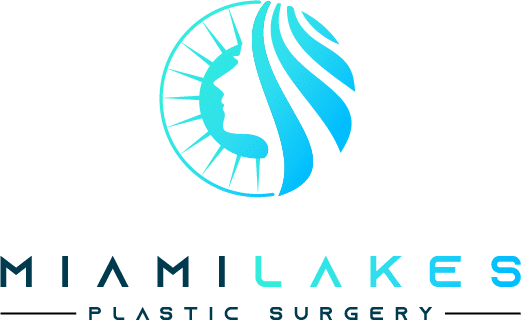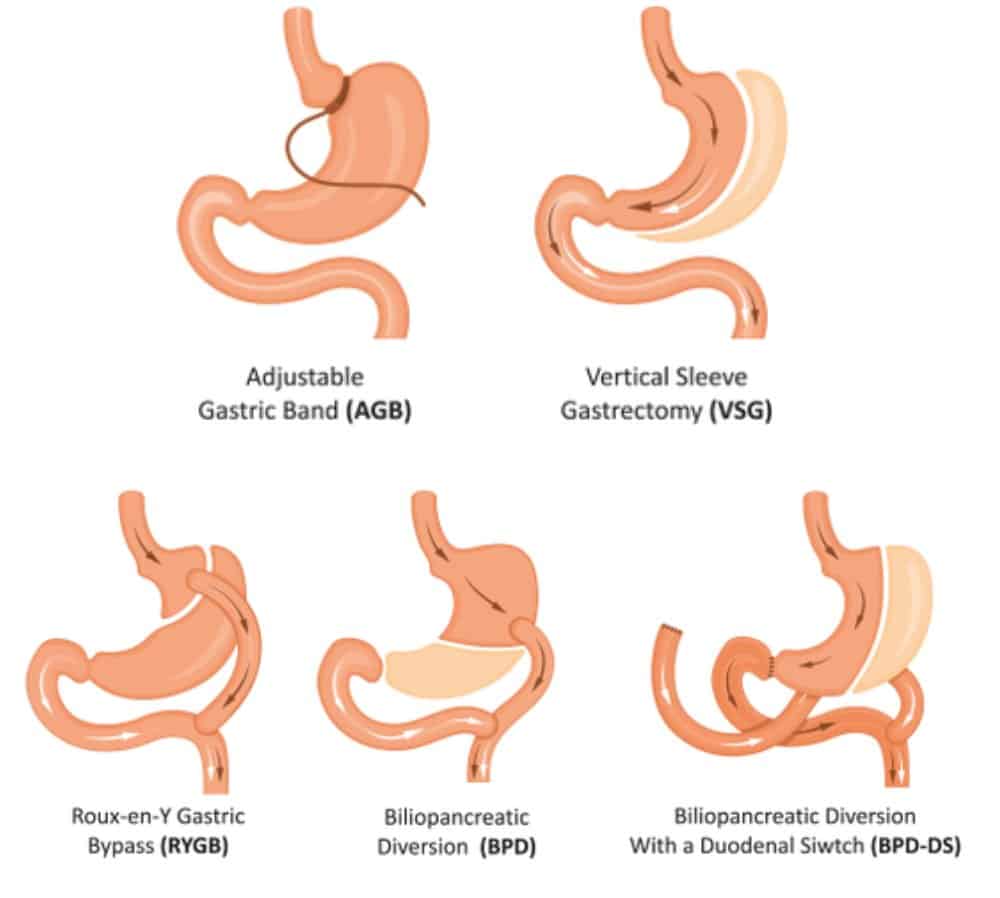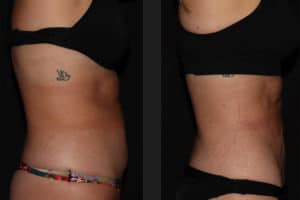Weight loss offers numerous health benefits, including lower blood sugar and cholesterol levels, reduced blood pressure, less stress on the musculoskeletal system, improved heart function, and optimal mental health.
However, most people with BMI above 35 fail to lose weight with exercise and diet. The stubborn fat accumulated in the abdomen, back, buttocks, thighs, arms, and legs are almost impossible to remove with strict diet and exercise.
The good news is that you can undergo bariatric surgery if your BMI is between 35 and 45 or above. Bariatric surgery has different types, but the most common ones are sleeve gastrectomy or gastric sleeve, gastric bypass, and adjustable gastric banding. Today’s article will discuss these bariatric surgeries and provide essential details. Read on!
Get $500 Off on Bariatric Surgery In Miami
What is Sleeve Gastrectomy, Procedure, Risk, Recovery, and Average Cost in the U.S?
Sleeve gastrectomy, also known as gastric sleeve, is a weight loss surgery that requires the surgeon to reduce the stomach by 15% of its original size. The surgeon removes a large portion of your stomach at the curvature, resulting in a tube-like or sleeve-like structure.
Procedure
During the procedure, the surgeon separates and removes a part of your stomach and focuses on the remaining section to form a sleeve-like structure. The purpose is to maintain an optimal stomach size to hold a small amount of food. A gastric sleeve is ideal for reducing ghrelin hormone production, lessening your desire to eat more food. So this results in significant weight loss.
Risks
Dehydration, gallstones, food intolerances, and malnutrition are common risks associated with gastric sleeve surgery. However, not following your surgeon’s instructions can complicate the situation and cause conditions like gastritis, the inflammation of your stomach lining, with symptoms like heartburn, nausea, vomiting, digestive discomfort, and pain.
Recovery
The average recovery period is between two and three weeks for incisions to heal. However, the stomach staple line takes around six to eight weeks to heal. You can resume normal activities after one month.
Average Cost
The average cost of gastric sleeve surgery in the United States is between $9,000 and $27,000. However, the price depends on various factors, such as the surgeon’s experience, operating room facilities, location, etc.
What is Gastric Bypass, Procedure, Risk, Recovery, and Average Cost in the U.S?
Gastric bypass is a bariatric surgery requiring the surgeon to create a small pouch and connect it directly to the small intestine. Looking for a board-certified surgeon is essential because gastric bypass is a complicated procedure.
Procedure
During the procedure, the surgeon makes an incision to reach the stomach and alters its upper part to form a small gastric pouch. The surgeon cuts a loop of your small intestine and connects it to the gastric pouch. The new connection between the pouch and the small intestine is called anastomosis.
Risks
Complications of gastric bypass surgery include infections, internal bleeding, blood clots, and anastomosis leaks. However, if you follow the surgeon’s guidelines, you can reduce the risk of these complications.
Recovery
Because most gastric bypass surgeries are minimally invasive, the surgeon makes small incisions to perform the procedure, and the recovery period is shorter than other bariatric procedures. You will stay in the hospital for two or three days and resume normal activities within five weeks.
Average Cost
Like gastric sleeve, the cost of gastric bypass depends on the surgeon’s experience, anesthesia, clinic’s location, operating room facilities, equipment for laparoscopic surgery, etc. The average cost of gastric bypass surgery in the U.S is $23,000.
What is Adjustable Gastric Banding, Procedure, Risk, Recovery, and Average Cost in the U.S?
Adjustable gastric banding is a weight-loss surgery requiring the surgeon to adjust the first band after six weeks following the bariatric procedure. A board-certified surgeon at Miami Lakes Cosmetics performs the operation without surgery. It takes no more than ten minutes to complete the procedure.
Procedure
The surgeon adds or removes the fluid in a balloon around the band during the procedure. The surgeon places a port under your abdominal skin. A narrow tube leads from this device to the band around the stomach.
Risks
Bleeding, blood clots, infections, etc., are common side effects of adjustable gastric banding. Because a surgeon performs this procedure under general anesthesia, you may experience allergic reactions or long-term breathing problems. Band slipping, stomach puncturing, and food not passing through the stomach are other complications.
Recovery
The average recovery period is between five and seven days. It is crucial to regulate the portion size after adjustable gastric banding. The good news is that this procedure can help you lose 75% of excess weight within 24 months following the surgery.
Average Cost
The average cost of adjustable gastric banding is between $9,000 and 18,000. However, prices vary based on factors such as the clinic’s geographic location, surgeon’s experience, anesthesia, and insurance coverage.
Advantages and Disadvantages of Each Type of Bariatric Surgery
Gastric Sleeve
Pros:
- Efficient and reliable weight loss
- Shorter surgery time
- Safer and effective for people with morbid obesity
- It does not cause long-term malnutrition
Cons:
- Irreversible surgery
- Causes acid reflux
- Deteriorates metabolic system
Gastric Bypass
Pros:
- Dramatic weight loss
- Optimal results for a prolonged period
- Reduced risks of acid reflux
- Evidence-based surgery technique
- Minimally invasive options
Cons:
- A completed procedure that takes more time
- Malnutrition and nutritional deficiency
- Bowel obstruction and ulcers
- Dumping syndrome
- Irreversible surgery
Adjustable Gastric Banding
Pros:
- Optimal weight loss
- Minimally invasive options
- Invisible scars
- Fast recovery
- Removable band
- Lower risks of malnutrition
Cons:
- Slower overall weight loss
- Requires multiple adjustments
- Band slipping can lead to complications
What to Do Next?
Whether gastric sleeve, gastric bypass or adjustable gastric banding, Miami Lakes Cosmetics’ surgeons have years of experience and use evidence-based approaches and safer techniques to streamline overall results and reduce the risk of complications. Call us between 9 am and 5 pm, Monday to Friday.





